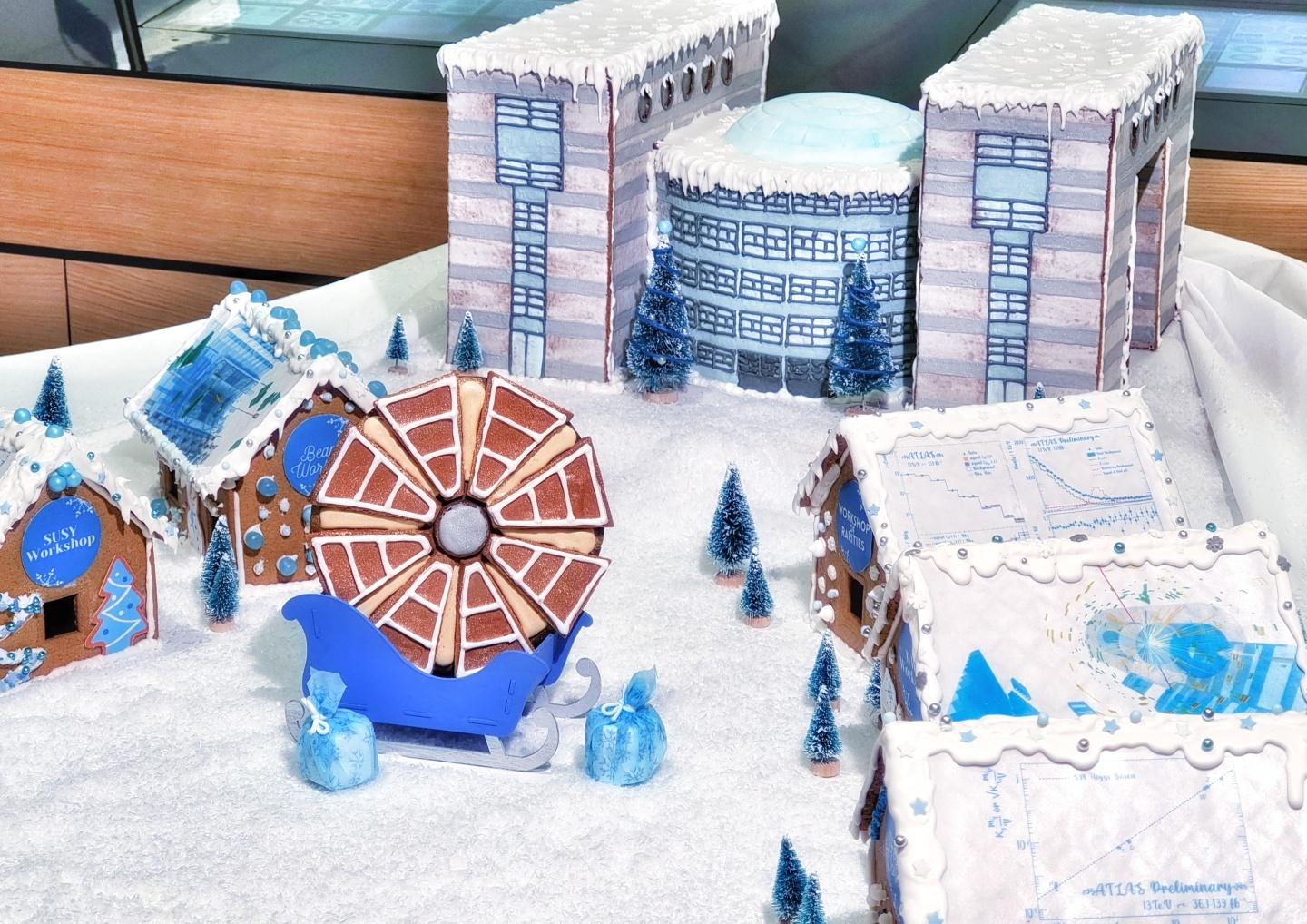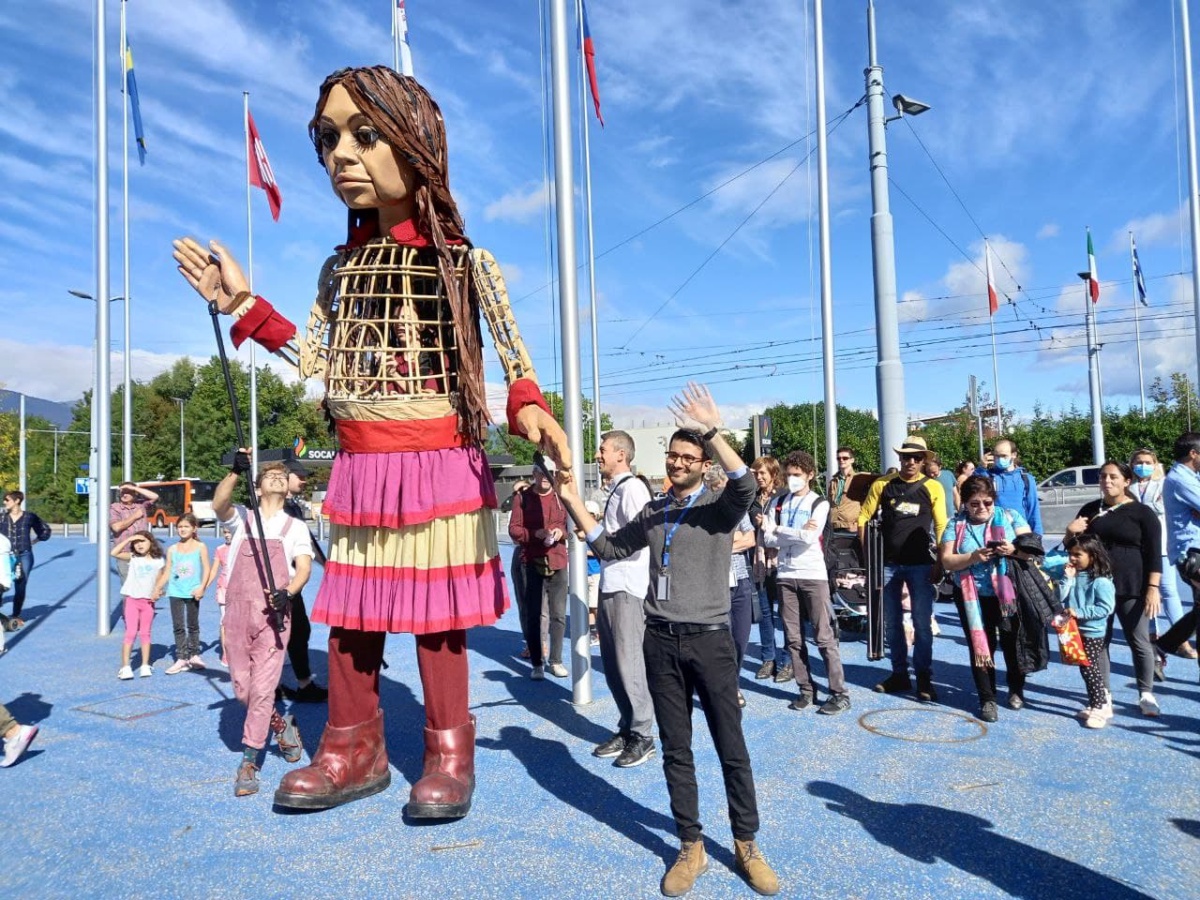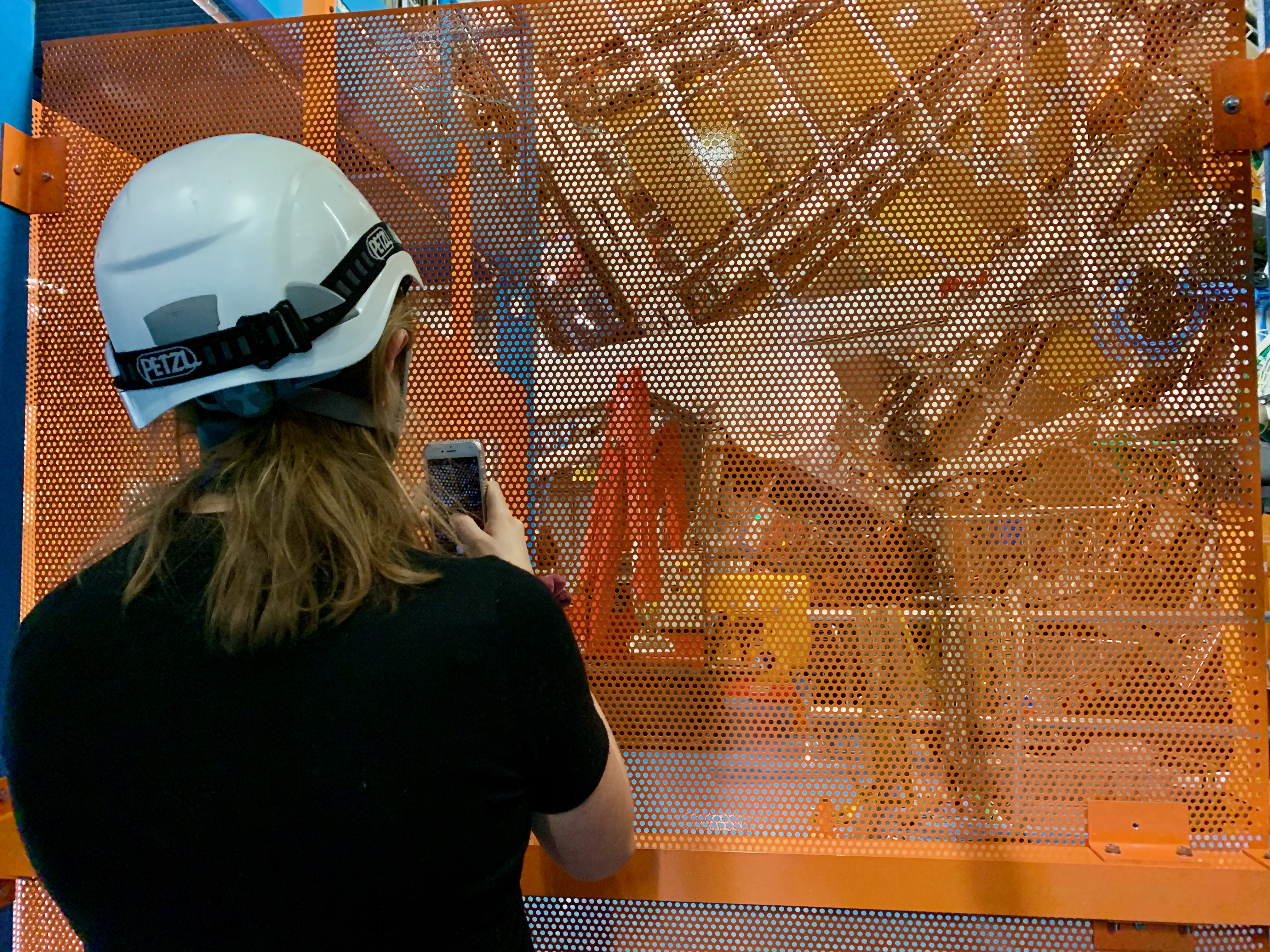Picturing particles
11 May 2016 | By
Spring is now in full bloom at the ATLAS experiment which recorded the year’s first collisions for physics on Monday, 9 May. Event displays from these collisions were immediately streaming on the ATLAS live website, with some shared across social media platforms.
But what do these beautiful, complex images represent? Known as “event displays”, these snapshots are high-tech visualisations of information recorded by the ATLAS experiment. But their history and development are as complex as the particles they display.
“Particle physicists study a field that is, by its very nature, invisible to the naked eye,” says Riccardo-Maria Bianchi, who works on ATLAS visualisation software. “That can make the task of visualising particle interactions very challenging.”
In the 20th century, physicists developed particle detectors such as cloud chambers and bubble chambers that turned invisible interactions into visible tracks. With the help of high-speed cameras, these tracks were captured on film to create the world’s first event displays.
However, as experiments have grown in size and complexity, a simple point-and-shoot approach will no longer do. When experiments go digital, particle collisions are recorded as electronic data and event displays evolve to become computer-generated visual representations of that data.
The ATLAS collaboration use two types of visualisation software: VP1 and Atlantis. Both were specifically developed for the ATLAS experiment to analyse data directly and convert them into graphical objects. Each software has a specific area of expertise.
VP1, or Virtual Point 1, provides interactive 3D event displays. The software uses detailed geometry to display a particle’s path through the ATLAS experiment. “When we run our experiment (or when we design a new piece of it) we need to check the performance of every detector layer to make sure they respond as we expect,” says Riccardo-Maria Bianchi. “Interactive data visualization tools like VP1 let us follow these particles through the entire experiment, starting from their birth at the interaction point.” VP1 software is also used for physics analyses, for example allowing users to view different subsystems and use tools to mask channels.
Meanwhile, Atlantis creates two-dimensional event displays that are prominently showcased in the ATLAS control room. “It’s the heartbeat of ATLAS,” says Paul Laycock, ATLAS Data Preparation Coordinator. “We monitor each and every subsystem individually in the control room, but Atlantis brings the information together in a way that’s immediately intuitive. At a glance we can see that everything is OK.” The events seen in the control room are also quickly transferred to the ATLAS Live website, providing a real-time look at data coming from the experiment to the public.
“We analyse billions of events using sophisticated statistical techniques; we can’t afford to look at each event individually,” continues Paul Laycock. “However a picture is worth a thousand words, and event displays help us describe and understand analyses using our physics intuition.”
So the next time you see one of these stunning event displays on your twitter feed or in a scientific paper, take a moment to appreciate the decades of work that went into its development.
Discover more ATLAS event displays here.



